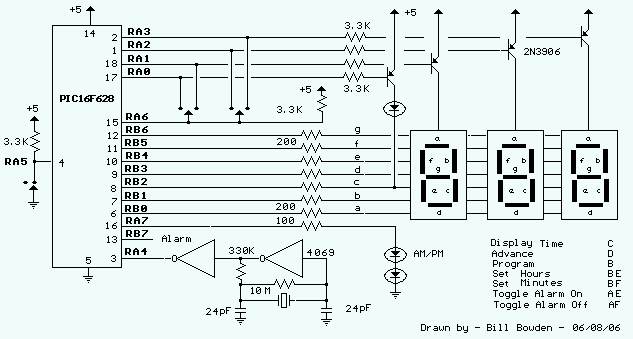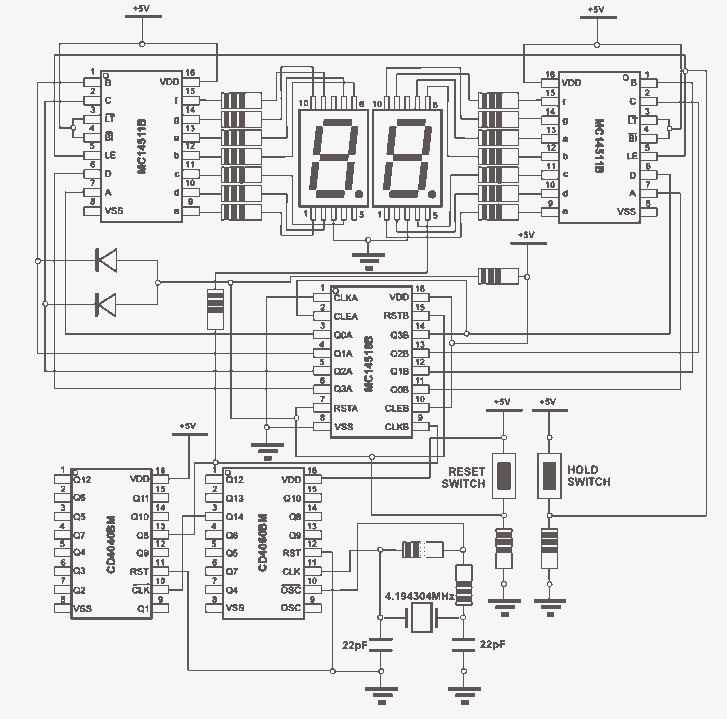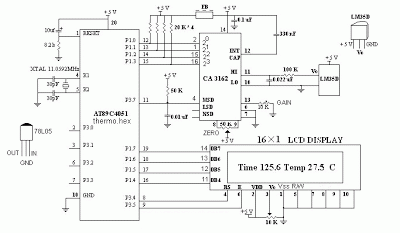
Digital Message Recorder

The objective of this digital electronics project is to record messages using a dedicated voice recorder integrated circuit. Recordings are stored in non-volatile memory cells, ensuring that messages remain saved even when power is removed from the device. The Winbond ISD2500 Series offers high-quality, single-chip Record/Play solutions for message applications ranging from 60 to 120 seconds. These CMOS devices feature an on-chip oscillator, microphone preamplifier, automatic gain control, anti-aliasing filter, smoothing filter, speaker amplifier, and a high-density multi-level storage array. Additionally, the ISD2500 is compatible with microcontrollers, enabling complex messaging and addressing capabilities. Recordings are stored in on-chip non-volatile memory cells. The ISD25120 operates in several modes, with the multi-message recorder mode being utilized here. Users can record multiple messages, utilizing up to 120 seconds of memory space. To begin recording, the SPDT switch should be set to the Record position, followed by a push and release of the Start/Pause button to initiate recording, indicated by the illumination of the Record LED. The Start/Pause button can be pressed again to pause and stop recording, marking the end of Message 1. Later, users can record a subsequent Message 2 by pressing the Start/Pause button again. When the switch is set to Play, messages will playback one at a time, requiring the Start/Pause button to be pressed again to access the next message. The Reset switch returns the internal address pointer to the beginning of the memory space.
The described digital voice recorder circuit employs the Winbond ISD2500 series integrated circuit, which serves as the core component for message recording and playback functionalities. The circuit design includes essential support components such as capacitors for filtering and stabilization, resistors for setting gain levels, and a microphone for audio input. The microphone is connected to the preamplifier stage, where the audio signal is amplified and conditioned before being processed by the ADC within the ISD2500.
The on-chip oscillator generates the necessary clock signals for timing operations, while the automatic gain control (AGC) ensures consistent audio levels during recording. The anti-aliasing and smoothing filters are critical for maintaining audio quality by minimizing noise and distortion in the recorded messages. A speaker amplifier drives the playback audio to an external speaker, providing clear sound reproduction of the recorded messages.
The microcontroller interface allows for programming and control of the ISD2500's features, enabling advanced functionalities such as message addressing and user interaction through the Start/Pause and Reset switches. The SPDT switch facilitates the selection between recording and playback modes, while the LED indicator provides visual feedback during operation.
Overall, the circuit is designed for ease of use, allowing users to record and playback messages with minimal effort while ensuring high audio quality and reliability. The non-volatile memory feature ensures that recorded messages are preserved even in the absence of power, making this project suitable for various applications where message storage and retrieval are required.The purpose of this digital electronics project is to record messages using a dedicated voice recorder integrated circuit. Recordings are stored in a non volatile memory cells, which means that the message will still be saved even though power has been removed from the device.
Winbond`s ISD2500 Series provide high-quality, single-chip, Record/Play back solutions for 60 seconds to 120 seconds message applications. The CMOS devices include an on-chip oscillator, microphone preamplifier, automatic gain control, antialiasing filter, smoothing filter, speaker amplifier, and high density multi-level storage array. In addition, the ISD2500 is microcontroller compatible, allowing complex messaging and addressing to be achieved.
Recordings are stored into on-chip nonvolatile memory cells. The ISD25120 has several modes of operation. The mode used here is as a multi-message recorder. You may record as many messages as you want up to 120 seconds of memory space. Put the SPDT switch into the Record position and just push & release the Start/Pause button to start recording. The Record LED goes on. Push the Start/Pause button to Pause - stop recording. That is the end of Message 1. Sometime later you can record a follow on message, Message 2, by pushing the Start/Pause button again.
When you put the switch to Play the messages will playback. Only one message will be played back at a time. You must push Start/Pause again to get the next message. The Reset switch will move the internal address pointer back to the start of the memory space. 🔗 External reference
The described digital voice recorder circuit employs the Winbond ISD2500 series integrated circuit, which serves as the core component for message recording and playback functionalities. The circuit design includes essential support components such as capacitors for filtering and stabilization, resistors for setting gain levels, and a microphone for audio input. The microphone is connected to the preamplifier stage, where the audio signal is amplified and conditioned before being processed by the ADC within the ISD2500.
The on-chip oscillator generates the necessary clock signals for timing operations, while the automatic gain control (AGC) ensures consistent audio levels during recording. The anti-aliasing and smoothing filters are critical for maintaining audio quality by minimizing noise and distortion in the recorded messages. A speaker amplifier drives the playback audio to an external speaker, providing clear sound reproduction of the recorded messages.
The microcontroller interface allows for programming and control of the ISD2500's features, enabling advanced functionalities such as message addressing and user interaction through the Start/Pause and Reset switches. The SPDT switch facilitates the selection between recording and playback modes, while the LED indicator provides visual feedback during operation.
Overall, the circuit is designed for ease of use, allowing users to record and playback messages with minimal effort while ensuring high audio quality and reliability. The non-volatile memory feature ensures that recorded messages are preserved even in the absence of power, making this project suitable for various applications where message storage and retrieval are required.The purpose of this digital electronics project is to record messages using a dedicated voice recorder integrated circuit. Recordings are stored in a non volatile memory cells, which means that the message will still be saved even though power has been removed from the device.
Winbond`s ISD2500 Series provide high-quality, single-chip, Record/Play back solutions for 60 seconds to 120 seconds message applications. The CMOS devices include an on-chip oscillator, microphone preamplifier, automatic gain control, antialiasing filter, smoothing filter, speaker amplifier, and high density multi-level storage array. In addition, the ISD2500 is microcontroller compatible, allowing complex messaging and addressing to be achieved.
Recordings are stored into on-chip nonvolatile memory cells. The ISD25120 has several modes of operation. The mode used here is as a multi-message recorder. You may record as many messages as you want up to 120 seconds of memory space. Put the SPDT switch into the Record position and just push & release the Start/Pause button to start recording. The Record LED goes on. Push the Start/Pause button to Pause - stop recording. That is the end of Message 1. Sometime later you can record a follow on message, Message 2, by pushing the Start/Pause button again.
When you put the switch to Play the messages will playback. Only one message will be played back at a time. You must push Start/Pause again to get the next message. The Reset switch will move the internal address pointer back to the start of the memory space. 🔗 External reference





